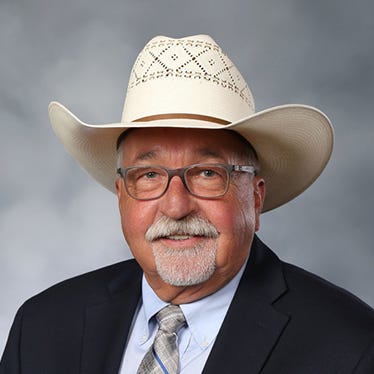October 16, 2020

I’m probably one of the few people in the world who absolutely detests the taste and aroma of pumpkin spice. I always have. Needless to say, my taste buds and olfactory sensory neurons are abused every year during this period from pre-Halloween to post-Thanksgiving.
It seems that every cafe, restaurant and fast-food joint is adding the pumpkin spice flavor to every single item on their menu. You can select from pumpkin spice coffee, pumpkin spice ice cream, pumpkin spice soda pop and pumpkin spice (fill in the blank). Last week, I even saw a display in the local convenience store for pumpkin spice flavored-beer! No thank you to all the above.
I can remember the time when an old girlfriend’s mother invited me over to have supper with them about this time of year. It was a wonderful spread of food, and everything I ate was delicious — until she brought out dessert, and it was … you guessed it … pumpkin pie.
I wanted to make a good impression (the girl was really pretty), so I eagerly accepted the treat and fought the gag reflex with all my might, somehow managing to get it all down. I raved about it the rest of the evening in a scene that was certainly deserving of an Oscar nomination. All I can say is, thank goodness the pumpkin taste was diluted by a 3-inch layer of whipped cream.
Growing pumpkins
Even though I despise the taste of pumpkin, I used to love growing them. As a kid, the pumpkin business was one of the few ways I had to earn spending money that I could call my own. Once the cornfield was hoed and my dad had cultivated it for the last time (this was long before anyone in our area used herbicides to control weeds), my older sister and I would take pumpkin seeds that were saved from last year’s crop and carefully plant a multitude of “hills” among the rows of corn. By the time the corn was ready to harvest, there was always a bumper crop of bright orange future jack-o’-lanterns and pumpkin pies.
My sister and I would gather them by hand and load up the old four-wheel corn wagon so we could haul them to the local general stores that dotted the area. The proprietors would pay us 5 to 10 cents per pumpkin, depending on size, as long as we promised to come back and haul off all the unsold ones after the first hard freeze.
One year, in particular, provided an unusually large crop for not only us, but also evidently every other farmer in the area, and we were left with a wagon full of unsold pumpkins. Dad suggested I feed two of them each day to the pair of butcher hogs we were growing out to provide the winter’s meat supply, as a way to keep them from going to waste. As he requested, I hauled two giant pumpkins in my little red wagon about 500 yards up the dry branch to the hog pen every day until the supply was exhausted. Butchering time for the two hogs coincided with the last of the pumpkins being fed.
At butchering time, everyone who helped in the process — family, friends and neighbors — always looked forward to Mom frying up a big meal of fresh pork tenderloin before everyone went home. It was always a great feast, and no one looked forward to it more than me.
That year, though, I had to pass on the pork tenderloin after the first bite. It was probably just in my feeble mind, but I could have sworn that the usually delicious treat had an all-too-familiar taste of … pumpkin spice.
Crownover farms in Missouri.
About the Author(s)
You May Also Like






